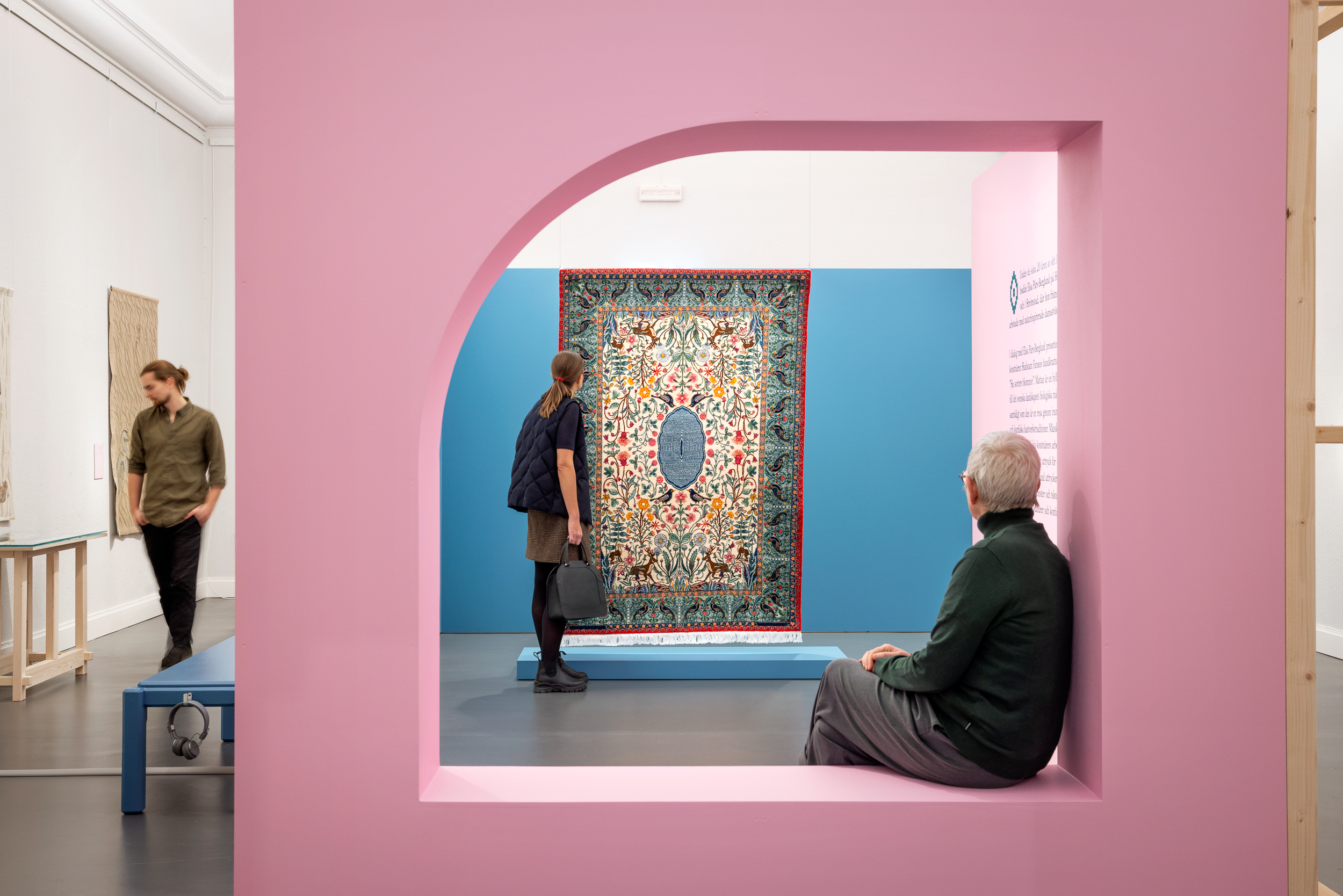november 18 2023 – October 20 2024
Let a Hundred Flowers Bloom
The exhibition Let a Hundred Flowers Bloom featured textile works by Elsa Pärs-Berglund exhibited alongside contemporary artists Shabnam Faraee and Josefin Gäfvert.
The exhibition Let a Hundred Flowers Bloom featured textile works by Elsa Pärs-Berglund exhibited alongside contemporary artists Shabnam Faraee and Josefin Gäfvert.

Elsa Pärs-Berglund’s (1920–2005) artistic practice was socially engaged, and with great precision she wove the burning issues of her time into her art. Through weaving techniques such as double weave, damask, and dukagång, she depicted political events, global injustices, environmental concerns, and the Swedish class struggle during the latter half of the 20th century.
The exhibition traced Pärs-Berglund’s artistic development through different periods of her career, from her early tapestry weavings inspired by the vibrant color fields and intuitive forms of the Gothenburg Colorism to her transition to technically demanding damask weaving, where animal and nature motifs found their place in her textiles.
The flower, symbolizing justice and resistance, is a motif derived from her work Let a Hundred Flowers Bloom from 1975. In other works, the red rose symbolizes the socialist struggle she was involved in during the 1970s and early 1980s. In her time, she was referred to as “the radical weaver of Hisingen,” and the exhibition focuses on both her political commitment and her experimental approach to nature-inspired damask.

Elsa Pärs-Berglund’s work Let a Hundred Flowers Bloom has given the exhibition its name. Photo: Ina Winther Åshaug
In dialogue with Elsa Pärs-Berglund’s works, two contemporary artists were featured. By Shabnam Faraee the hand-knotted rug Seven Kinds of Flowers, connected to Pärs-Berglund’s later works. It pays homage to the biological diversity of the Swedish landscape and takes us on a journey through the rich craft traditions of Iran. By Josefin Gäfvert five works were exhibited. Just like Pärs-Berglund, Gäfvert experiments with the art of weaving and its unique aesthetic expression, approaching the image of the historical 70s weaver with great humor.

Shabnam Faraee’s Seven kinds of flowers, was hand-knotted by Morteza Golestani. Photo: Kristin Lidell.
Top illustration: Studio Parasto Backman